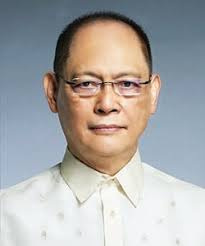Ladies and gentlemen, good morning. Let me extend a warm Filipino welcome to all our guests for joining us in today’s Meet and Greet session with the Philippine Embassy and the US-Philippines Society.
During the International Monetary Fund (IMF)-World Bank (WB) Annual Meetings in 2016, I addressed this audience as the Philippine Budget Secretary. I am pleased to represent the Philippines, this time, as head of the Bangko Sentral ng Pilipinas -a hat I’ve been wearing for nearly seven months now.
Despite this change of roles and mandates for policy formulation, at least two things remain as necessary. First, conversation with and inputs from stakeholders form an important part of the policy making process.
As we are all aware, the threat of slowing global economic growth looms larger than ever on the horizon as protectionist policies and geopolitical tensions continue to dominate the global growth narrative. Nonetheless, the Philippines remains on a very sound footing because: (i) economic growth is solid and sustainable; (ii) inflation is low and manageable; (iii) the external payments position is strong; and (iv) the banking system is strong and stable. I will describe briefly each of these four points shortly.
MEANINGFUL STRUCTURAL REFORMS
The Philippines has come a long way from being the “Sick man” of Asia. In fact, the Philippines is now recognized globally as among the fastest growing and most resilient economies in the world that enjoys brighter prospects ahead. The transformation, however, did not happen overnight. The gradual transformation was a product of a long list of structural reforms that started way back in, the 1990s. It did not happen overnight.
I remember in the 1990s when a group of economists headed by Paul Krugman came to the Philippines to assess the economy. Their verdict then on the long-term growth of the Philippines was, at best, 3.0 percent. We’ve come a long way from that dismal assessment. A recent assessment confirm that the Philippine Economy can sustain a long-term growth of 6.5%.

We have deregulated the oil industry, liberalized the power sector, privatized the water services, and acceded to the World Trade Organization. These are just some of the reforms implemented in the 1990s that have been followed through in the succeeding decades and-if I may stress-more aggressively so in the last three (3) years under the Duterte Administration.
Key reforms from 2016 onwards are expected to unleash more growth potentials for the Philippines. Among these positive game changers have involved tax reforms, liberalization of rice importation, the national ID system, Universal Healthcare, Universal Access to Tertiary Education, Ease of Doing Business law, relaxation of the Foreign Investments Negative List (FINL), and the revised Corporation Code-just to name a few.
The newly amended BSP Charter in 2019 has also strengthened the BSP’s capacity to better safeguard price and financial stability, and to promote an efficient payments and settlements system amidst a growing economy and the increasing sophistication of the financial system.
All these reforms should support and sustain the currently favorable conditions of the economy, summarized by the four key observations I mentioned earlier. Let me expound of these at this point.
PHILIPPINE MACROECONOMIC PERFORMANCE
First, solid and sustainable economic growth. The Philippines recorded its 82nd consecutive quarter or roughly more than twenty years of uninterrupted economic growth in the second quarter of 2019. This shows that we have managed to sail through the toughest external challenges from the Asian financial crisis to the Global financial crisis.
On the production side, economic growth was propelled mainly by the robust performance of the services sector. Meanwhile, broad-based expansion in household consumption and government spending reinforced growth on the demand side.
The Build, Build, Build program ushers in the country’s Golden Age of Infrastructure, giving additional solid push for the economy’s productive capacity to expand further.
Second, domestic inflation is within-target. After posting successive multi-year highs that culminated in a 6.7 percent nine-year peak in September and October, inflation has slowed considerably and reverted to within the target range of 2.0 to 4.0 percent. This is credited to a series of monetary actions by the BSP that addressed brewing second-round effects combined with and non-monetary actions by the government that addressed bottlenecks to food supply.
The decelerating trend in inflation, which fell to 0.9 percent in September, has allowed us to reduce the interest rate on the BSP’s overnight reverse repurchase (RRP) facility by 75 basis points so far this year to 4.0 percent. The rate cuts were aimed at helping inflation move towards the middle of the target range, in line with the BSP’s flexible approach to inflation targeting.
In terms of the BSP’s outlook for inflation, our latest baseline projections in September show inflation settling within the target range of 3.0 percent ± 1.0 percentage point for both 2019 and 2020.
Third, the country’s external position is reflective of an economy driven by solid macroeconomic fundamentals and firm growth prospects. Based on the latest estimates, the country’s balance of payments (BOP) position for the first eight (8) months of the year posted a surplus of US$5.5 billion, a turnaround from the US$2.4 billion deficit recorded in the same period last year.
For Q2 2019, the current account registered a deficit of US$145 million, a 95.6 percent reduction from the US$3.3 billion deficit registered in the same quarter in 2018. This developed on account mainly of the lower deficit in the trade-in-goods account. Increased net receipts trade-in-services, and secondary and in the primary income also contributed to the improvement of the current account in the second quarter of the year.
Driving this surplus includes reliable inflows from Overseas Filipinos’ (OF) remittances and net inflows of portfolio investments during the first half of the year.
Foreign direct investments (FDIs) in the last two (2) years have also lent support to the country’s external account along with rising investor confidence.
Meanwhile, after falling by 1.8 percent, year-on-year in 2018 exports begun to recover slightly, edging up to $40.391 billion in the first seven (7) months in 2019. July itself marked the fourth straight month of export growth at 3.5 percent.
These steady inflows of foreign exchange helped raise gross international reserves (GIR) to an all-time high of US$86.2 billion in September 2019, providing ample external liquidity buffer.
At this level, the GIR can cover up to 7.5 months’ worth of imports of goods and payments of services and primary income. The rule of thumb is that a sufficient GIR level can cover three (3) months’ worth of imports of goods and payments.
My fourth and last point – a strong and stable banking system – also offers a sound basis for optimism. Our financial system remains sound and continues to effectively intermediate funds to productive sectors, thus promoting economic growth. The continued strong credit activities demonstrate the effectiveness of Philippine banks in their role as intermediator of funds in the economy.
Banks remain sufficiently capitalized and past due ratios have also consistently declined over the years, giving banks greater ability to intermediate funds, manage risk, and maintain profitability.
The stability and soundness of the banking system is being supported as well by the financial sector reform agenda of the BSP focusing on areas such as banking supervision; cybersecurity and technology risk management; anti-money laundering; counter-terrorist financing; and capital market development.
Our financial system remains sound and continues to effectively intermediate funds to productive sectors, thus promoting economic growth.
The banking system likewise exhibits robust financial intermediation activity as its double-digit growth in bank lending helps support not only household consumption but also business activities, such as those in real estate, trade, manufacturing, and construction, among other sectors.
MOVING FORWARD
In sum, the country has been making considerable progress towards achieving its macroeconomic goals. Looking ahead, prospects for the domestic economy continue to remain favorable as domestic growth fundamentals are expected to remain intact. GDP expansion is expected to continue to pick up in 2019 due to the robust growth in the services and industry sectors. Private demand is expected to remain firm, aided mainly by sustained remittance inflows and stable inflation. As more government infrastructure programs get underway, the positive spillover effects on private capital formation would also contribute to economic growth.
From this position of strength, the BSP remains committed to continually upholding the highest standard of excellence in crafting policies, and thereby achieve our mandates.
Going forward, the BSP will continue to monitor price and output conditions to ensure that monetary policy remains appropriately supportive of sustained non-inflationary economic growth over the medium term. We will be even more proactive in promoting a regulatory environment that enables growth and innovation among banks and, at the same time, enhancing their ability to manage risks.
Admittedly, the Philippine economy is not immune from risks arising from external factors. The global economic slowdown brought about largely by US-China trade tension and growing protection affect us all. But we are confident that the Philippines will be one of the least affected economies because its growth is based on strong domestic demand and the economy is not export-oriented.
Many studies support this view that the Philippines will be one of the most resilient economies in this slowing and turbulent global economy.
Having said all these, I am looking forward to a productive and stimulating discussion with you and will be receptive to your insights.
Thank you and mabuhay!












